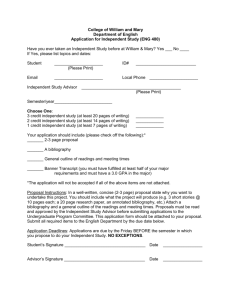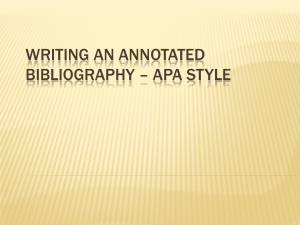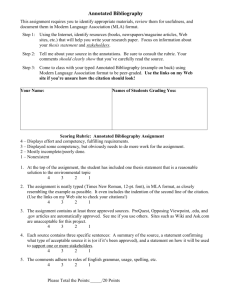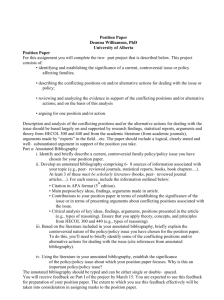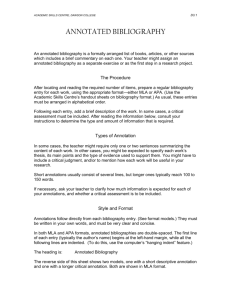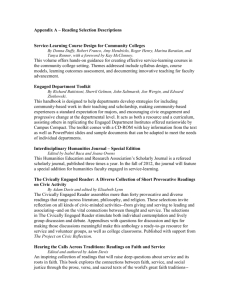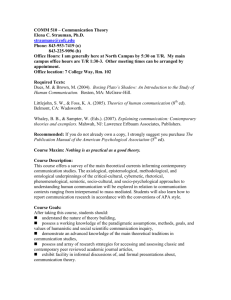Management of School Information Systems
advertisement
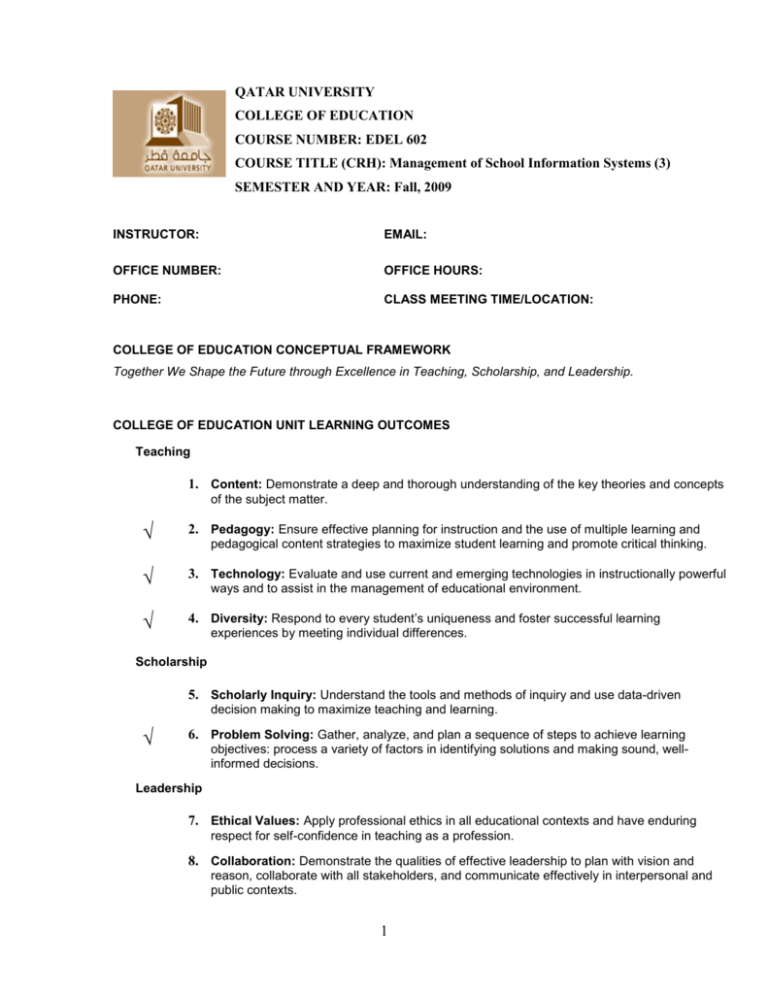
QATAR UNIVERSITY COLLEGE OF EDUCATION COURSE NUMBER: EDEL 602 COURSE TITLE (CRH): Management of School Information Systems (3) SEMESTER AND YEAR: Fall, 2009 INSTRUCTOR: EMAIL: OFFICE NUMBER: OFFICE HOURS: PHONE: CLASS MEETING TIME/LOCATION: COLLEGE OF EDUCATION CONCEPTUAL FRAMEWORK Together We Shape the Future through Excellence in Teaching, Scholarship, and Leadership. COLLEGE OF EDUCATION UNIT LEARNING OUTCOMES Teaching 1. Content: Demonstrate a deep and thorough understanding of the key theories and concepts of the subject matter. √ 2. Pedagogy: Ensure effective planning for instruction and the use of multiple learning and √ 3. Technology: Evaluate and use current and emerging technologies in instructionally powerful √ 4. Diversity: Respond to every student’s uniqueness and foster successful learning pedagogical content strategies to maximize student learning and promote critical thinking. ways and to assist in the management of educational environment. experiences by meeting individual differences. Scholarship 5. Scholarly Inquiry: Understand the tools and methods of inquiry and use data-driven decision making to maximize teaching and learning. √ 6. Problem Solving: Gather, analyze, and plan a sequence of steps to achieve learning objectives: process a variety of factors in identifying solutions and making sound, wellinformed decisions. Leadership 7. Ethical Values: Apply professional ethics in all educational contexts and have enduring respect for self-confidence in teaching as a profession. 8. Collaboration: Demonstrate the qualities of effective leadership to plan with vision and reason, collaborate with all stakeholders, and communicate effectively in interpersonal and public contexts. 1 COURSE DESCRIPTION This course is designed to provide candidates with the knowledge and ability to use school information systems, which include collecting, analyzing, and interpreting data, to assess and monitor the development, implementation, and stewardship of a vision; to assess and monitor the school culture, the curriculum and instruction, and the instructional practices; to assess and monitor the safety, effectiveness, efficiency, and equity of the organization, operations, and resources; and to assess and monitor issues and trends related to community conditions and dynamics. Prerequisites: Admission to the Masters in Education, Educational Leadership Program COURSE OBJECTIVES The objectives of this course are to enable candidates to: 1. Use information systems to assess and monitor the development, articulation, implementation and stewardship of a school vision. 2. Use information systems to assess and monitor the school culture, the curriculum and instruction, and the instructional practices. 3. Use information systems to assess and monitor the safety, effectiveness, efficiency, and equity of the organization, operations, and resources. 4. Use information systems to assess and monitor issues and trends related to community conditions and dynamics. 5. Understand and be able to use information system software. COURES LEARNING OUTCOMES Upon completion of this course, the learner will be able to: 1. Explain how to use a system of data-based research strategies to develop, monitor, evaluate, and revise a school vision. 2. Identify methods ICT use that effectively promotes the learning of all students. 3. Make informed decisions in ICT acquisition and use. 4. Use ICT software in managing schools, keeping records, and communicating with parents. 5. Use public information and research-based knowledge of issues and trends to collaborate with families and community members. 6. Use appropriate methodologies to collect, analyze, and apply data to effective school management. 2 TEXTBOOKS AND READINGS Holcomb, E.L. (1999) Getting excited about data: How to combine people, passion, and proof. Thousand Oaks, CA: Corwin Press. Leithwood, K. (2006). Making schools smarter: Leading with evidence. (3rd ed.) Newberry Park, CA: Sage. COURES REQUIREMENTS 1. Each candidate is expected to attend class and contribute to the community of learners by being a positive participant in discussions, presentations, and hands-on projects. 2. All assignments should be submitted on the specified due date. Assignments turned in later are subject to point deductions. 3. All written assignments should have a cover sheet with assignment title, candidate name, course title, and date. 4. All written assignments should be word processed, double spaced, and in 12 point standard font. 5. All written assignments shall use appropriate citations and references in APA style. 6. All written assignments should use correct grammar and spelling. 7. In-class mid term and final exams will be given in this class. Each candidate is expected to be present for these exams except in cases of certified emergency. Use of Blackboard The course Blackboard site will be used for announcements, course resources, and assignments. Students will be expected to access the Blackboard sit at least once per week. COURSE MATRIX Unit Learning Outcomes Technology Diversity Pedagogy Technology Diversity Problem Solving QNPS Course Objectives Course Learning Outcomes Assessment (Tasks/Artifacts) 1 1, 2 Annotated Bibliography 3. Lead and manage change. 3. Lead and manage change. Classroom Action Plan 6. Develop and manage resources. Institutional Technology Plan 1, 2, 3, 4, 5 7. Reflect on, evaluate, and improve leadership and management 1, 2, 3, 4, 5, 6 School Portfolio and Action Plan 3 COURSE OUTLINE Week 1 2 3 4 Topic/Activity School Information: An overview Understanding Data: Basic Knowledge Guest Speaker: Data-Driven Decision Making Technology and Special Needs students Data: Sources and Analysis Methods (Part II: Quantitative) 6 Data: Sources and Analysis Methods (Part III: Action Research) 7 Creating A Supportive School Culture 8 Midterm Exam 9 10 ICT: Opportunities and Challenges Classroom management with ICT School Management with ICT: Guest Speaker – ICT Qatar 11 12 Digital Equity 13 Communicating Results 14 Applying Results 15 Creating a School Portfolio 16 Final Exam Assignments Due Holcomb: Chapts. 1-4 Draft Alignment Chart, Holcomb: p. 4 Solomon, Allen, and Resta: Chapts. 8, 12 (Readings packet) Leithwood, Aitken, & Jantzi: Chapt. 9 Mertens: Chapts. 1, 6, 8 (Readings packet) Mertens: Chapts. 4, 5 (Readings packet) Online readings Data: Sources and Analysis Methods (Part I: Qualitative) 5 Readings Interview data Classroom Action Plan presentations; Online quizzes (preand post) Holcomb: Chapts 2-5; Leithwood, Aitken, & Jantzi: pp. 15-86 Review of readings and class notes weeks 1-7 Online readings Online readings Online readings Online readings; UNESCO booklet Holcomb: Chapts. 710; Leithwood, Aitken, & Jantzi: Chapts. 10, 11, 12 Holcomb: Chapts. 11, 12, 14, 15; Leithwood, Aitken, & Jantzi: Chapts. 11, 12 Holcomb: Chapts. 13, 14; Online readings Review of all previous readings and class notes Delivery Methods Classroom test results Lectures by instructor and by guest speakers Large and small group discussions Individual and small group projects Use of multiple research tools (standard and technology-based) 4 Institutional Technology Plan Annotated Bibliography School Portfolio Presentations ASSESSMENTS Classroom Action Plan (20%). Working in small groups, candidates will analyze student achievement data and develop a report that includes the analysis along with specific strategies for improving instructional practices based on the data. Annotated bibliography (15%). Each candidate will conduct personal research and prepare an annotated bibliography on school planning and management tools. Institutional technology plan (15%). Working in small groups, candidates will analyze the school profile they have been given and prepare a written technology plan that is consistent with and supports the institutional vision. Candidates should be prepared to discuss their plan in class. School Portfolio and Action Plan (30%) Given a school profile, each candidate will analyze the data and develop an appropriate action plan for improving school-wide curriculum and instruction. A written report will be discussed with the class. Final (20%). At the end of the term, a written final, consisting of a combination of objective questions, short answer questions, and problem-solving tasks, will be administered in class. Questions and tasks for the final will be a sample of all knowledge and skills addressed during the course. GRADING SYSTEM A B+ B C+ C D+ D F = = = = = = = = 100 - 90 89.99 - 85 84.99 - 80 79.99 - 75 74.99 - 70 69.99 - 65 64.99 - 60 59.99 - 0 Academic Honesty Qatar University is an academic community actively engaged in scholarly pursuits. As members of this community, students are expected to recognize and honor standards of academic and intellectual integrity. The College of Education supports the ideals of scholarship and fairness by rejecting all dishonest work when it is submitted for academic credit. Qatar University encourages students to be responsible and accountable for their decisions and actions. Any attempt by students to present the work of others as their own or to pass an examination by improper means is regarded as a most serious offense and renders those students who do so liable to disciplinary action. Assisting another student 5 in any such dishonesty, or knowing of this dishonesty and not reporting it, is also considered a grave breach of honesty. Plagiarism: Plagiarism is the act of taking the words or ideas of another and representing them as one’s own. A further description of plagiarism can be found in the Student Handbook. Cheating: Examples of cheating include, but are not limited to, receiving unauthorized assistance, before, during, or after an examination or assignment, falsification or misrepresentation of information in an academic exercise or assignment, unauthorized use of someone else’s password or account number, and submitting work more than once without the consent of the department. Learning Support Qatar University operates Learning Support Centers on each campus to provide services to students to supplement their in-class instruction and ability to meet course requirements. These services include tutoring, acquiring efficient learning skills and strategies, academic and learning assessment (in conjunction with the Counseling Center), and writing labs and workshops. Information about the Learning Center ma y be found at http://www.qu.edu.qa/students/services/slsc/ Student Complaints Policy: Students at Qatar University have the right to pursue complaints related to faculty, staff, and other students. The nature of the complaints may be either academic or nonacademic. For more information about the policy and processes related to this policy, you may refer to the students’ handbook. 6 Accommodations for Students with Disabilities In accordance with Law No 2 of the year 2004, and Article 49 in the Constitution of Qatar: "Education is the right of all.", and "the State shall extend efforts to achieve fair and appropriate access in education for all". Qatar University seeks to ensure fair and appropriate access to programs, services, facilities, and activities for students with special needs. Any student who feels s/he may need an accommodation based on the impact of a disability should contact the instructor privately to discuss your specific needs. Please contact the Office for Disability Services to coordinate reasonable accommodations for students with documented disabilities. Special Needs Section Student Activities building Men’s Campus: 44033854, Fax: 44838925; Women’s Campus: 44033843, Fax: 44839802; Email: specialneeds@qu.edu.qa; Office hours: 7:30 AM – 2:30 PM REFERENCES Required texts may be obtained in the College of Education Resource Room. Copies on reserve may be used in the College of Education Resource Room. Short reading assignments may be given to support class work. These will be included in a Course Reading Packet located in the College of Education Resource Room. Students may use the Reading Packet in the Resource Room or make personal copies. Bernhardt, V.L. (1998). Data analysis for comprehensive school wide improvement. Larchmont, NY: Eye on Education. Bridglall, B.L. (2001, March). How people learn. Pedagogical Inquiry and Praxis, 1. New York: Columbia University, Teachers College, Institute for Urban and Minority Education. (ED 452 305). Bridglall, B.L., & Gordon, E.W. (2002, March). The idea of supplementary education. Pedagogical Inquiry and Praxis, 3. New York: Columbia University, Teachers College, Institute for Urban and Minority Education. (ED 464 173). 7 Coleman, J.S., Campbell, E.Q., Hobson, C.J., McPartland, J., Mood, A.M., Weinfeld, F.D., & York, L.R. (1966). Equality of educational opportunity. Washington, DC: U.S. Government Printing Office. Cyrs, T. (1998). Engaging students in distance learning: Interactive exercises and activities for field sites. Albuquerque, NM: Center for Educational Development, New Mexico State University. Darling-Hammond, L. (1998, January-February). Teachers and teaching: Testing policy hypotheses from a National Commission Report. Educational Researcher, 27(1), 5-16. (EJ 562 086). Flanagan, J.C. (1967). Program for learning in accordance with needs. Palo Alto: American Institutes for Research. Flanagan, J.C., Shanner, WM., Brudner, H.J., & Marker, R.W. (1975). An individualized instructional system: Program for learning in accordance with needs (PLAN). In H. Talmadge (Ed.), Systems of individualized education. Berkeley, CA: McCutchan. Forcier, R. (1996). The computer as a productivity tool in education. Columbus, OH: PrenticeHall. Harris, J. (1998). Design tools for the Internet-supported classroom. Alexander, VA: Association for Supervision and Curriculum Development. Glaser, R. (1967). Objectives and evaluation: An individualized system. Pittsburgh: University of Pittsburgh, Learning Research and Development Center. (ED 014 785). Gordon, E.W. (1986). Foundationss for academic excellence. Brooklyn: New York City Board of Education, Chancellor's Commission on Minimum Standards. (ED 270 529). Gordon, E.W. (2001, September). Affirmative development of academic ability. Pedagogical Inquiry and Praxis, 2. New York: Columbia University, Teachers College, Institute for Urban and Minority Education. (ED 458 321). James, D.W., & Jurich, S., & Estes, S. (2001). Raising minority academic achievement: A compendium of education programs and practices. Washington, DC: American Youth Policy Forum. Johnson, R. (2002). Using data to close the achievement gap: How to measure equity in in our schools. Thousand Oaks, CA: Corwin Press. Lezotte, L.W., & Jacoby, B.C. (1992). Sustainable school reform: The district context for school improvement. Okemos, MI: Effective Schools Products, Ltd. (ED 405 632). Lissitz, R. W. & Schaefer, W.D. (2002) Assessment in educational reform: Both means and ends. Boston: Allyn & Bacon.) Meskill, C. (2002). Teaching and learning in real time: Media, technologies, and language acquisition. Houston, TX: Athel. NAESP (2001) Essentials for principals: Databased decision-making. Alexandria, VA. NAESP. 8 NAESP (2001) Leading learning communities: Standards for what elementary principals should know and be able to do. Alexandria, VA: NAESP. Porter, B. (2001). Evaluating digital products Training and resource tools for using student scoring guides. Resnick, L.B. (1999). From aptitude to effort: A new Foundations for our schools. American Educator, 23(1), 14-17. (EJ 587 016). Trochim (W.) (2001). The research methods knowledge base. Cincinnati, OH: Atomic Dog Publishing. Tyler, R.W. (1949). Basic principles of curriculum and instruction. Chicago: Chicago University Press. Worthen, B., Sanders, J., & Fitzpatrick, J. (1997). Program evaluation: Alternative approaches and practical guidelines. New York: Addison Wesley Longman. Internet Resources Toolbelt, resources to support data-driven decision making http://www.ncrel.org/toolbelt/ Data-Driven Implementation Tools http://www.serve.org/csrd/datadriven/data.html Evaluating Whole-School Reform Efforts: A Guide for District and School Staff: http://www.nwrac.org/whole-school/index.html Using Data to Improve Student Achievement http://www.kde.state.ky.us/oapd/rsc6/dataanalysis.asp Disaggregation without Aggravation: multimedia training package http://www.sedl.org/pubs/catalog/items/teaching06.html Using Data to Improve Schools: http://www.aasa.org/cas/UsingDataToImproveSchools.pdf American Association of School Administrators’ Center for Accountability Solutions http://www.aasa.org/cas/ Fundamental Assessment Principles for Teachers and School Administrators: Article http://ericae.net/pare/getvn.asp?v=7&n=8 Ease-e Data Analyzer by TetraData: Online tool for data warehousing, mining, analysis, and reporting. http://www.ease-e.com/ease-e/products/products_services_analyzer.asp Goalview: Online tool to set goals, track performance, and report results especially for special needs and Title I students http://goalview.school.aol.com/GOALVIEW/index.asp 9 SchoolNet: Web-based tools for data collection and analysis and standards alignment http://www.schoolnet.com Socrates: Tools and services for setting questions, importing data, and analysis http://www.crminc.com/socrates/default.htm Quality School Portfolio: Free data analysis system http://qsp.cse.ucla.edu/mainSub/whatSet.html 10 Rubric for Classroom Action Plan Description: Working in small groups, candidates will select a set of student data, analyze it, and develop a report that includes the analysis along with specific strategies for improving instructional practices based on the data. The group will choose a data set and do appropriate analysis of that data set. In a single paper for each group of about 58 pages, the candidates will describe why they chose this data set, why they presented it in this way, and what changes they would recommend to improve student achievement. Inclusion of reference citations will add to the value of the project. The participants will prepare a multimedia presentation and present their findings to the class. Criteria Content 4 Covers topic in-depth with details and examples. Subject knowledge is excellent. 3 Includes essential knowledge about the topic. Subject knowledge appears to be good. Source information collected for all graphics, facts and quotes.. APA format is followed with few errors. 2 Includes essential information about the topic but there are 1-2 factual errors. 1 Content is minimal OR there are several factual errors. Sources Source information collected for all graphics, facts and quotes. All documented in desired format. APA format is strictly followed. Source information collected for graphics, facts and quotes, but not documented in desired format. Sources are cited and referenced, but APA format is not followed. Very little or no source information was collected. Sources are not cited or referenced. Presentation Well-rehearsed with smooth delivery that holds audience attention. Content is well organized using headings or bulleted lists to group related material. All requirements are met and exceeded. Rehearsed with fairly smooth delivery that holds audience attention most of the time. Uses headings or bulleted lists to organize, but the overall organization of topics appears flawed. All requirements are met. Delivery not smooth, but able to maintain interest of the audience most of the time. Content is logically organized for the most part. Delivery not smooth and audience attention often lost. One requirement was not completely met. Mechanics No misspellings or grammatical errors. Three or fewer misspellings and/or mechanical errors. Four misspellings and/or grammatical errors. More than one requirement was not completely met. More than 4 errors in spelling or grammar. Workload The workload is divided and shared equally by all team members. The workload is divided and shared fairly by all team members, though workloads may vary from person to person. The workload was divided, but one person in the group is viewed as not doing his/her fair share of the work. The workload was not divided OR several people in the group are viewed as not doing their fair share of the work. Data Analysis Data analysis is appropriate, thorough, and meaningful. Data analysis is appropriate and meaningful. Data is analyzed, but other methods would have been more appropriate and meaningful. Data is poorly analyzed and little meaning is evidenced. Data Presentation Data is presented in an accurate, meaningful, highly effective manner. Data is presented in an accurate and meaningful manner. .Data presentation has some inaccuracies and meaning is unclear. Data presentation is either absent or inaccurate and lacks meaning. Organization Requirements 11 There was no clear or logical organizational structure, just lots of facts. Rubric for Annotated Bibliography Each candidate will conduct personal research and prepare an annotated bibliography on adaptive technology tools having at least 10 references. Use APA format. Examples of an annotated bibliography and links to papers that explain APA format may be found in Appendix 4. Criteria Quality of Sources Documentation Diversity Narration Mechanics Annotated Bibliography 4 3 2 All sources clearly Most sources Several sources relate to the topic clearly relate to the either do not and are topic and are clearly relate to the appropriate for the appropriate for the topic or are not target audience target audience. appropriate for the target audience. All sources are All sources are Several sources accurately accurately have errors in documented using documented, but a documentation correct APA few are not in the and/or not in format. desired format. correct APA format. The set of The set of There is little references references diversity in the type provides a broad provided are of information and deep covering diverse in type of (content) OR the of the topic. The resource (book, type of resource. set includes a journal, Internet, range of resource etc), but do not types (books, provide a broad or internet, deep covering of newspaper, the topic. interviews, presentations, etc.) All sources include All sources include Most sources a clear, concise, a narration; most include a narration; and informative are clear, concise, most are narration. and informative. informative. No grammatical, spelling or punctuation errors. Almost no grammatical, spelling or punctuation errors 12 A few grammatical, spelling, or punctuation errors. 1 Sources are random and do not relate in a meaningful way to the topic. Most sources have errors in documentation and are not in correct APA format. Almost all of the references are similar in content AND type of resource. Many sources do not have narratives; many narratives are of poor quality (not clear, concise, or informative). Many grammatical, spelling, or punctuation errors. Instructions on making an annotated bibliography and an example. Please see the following website for more information about annotated bibliographies. http://www.library.cornell.edu/olinuris/ref/research/skill28.htm Example1: Goldschneider, F. K., Waite, L. J., & Witsberger, C. (1986). Nonfamily living and the erosion of traditional family orientations among young adults. American Sociological Review, 51, 541-554. The authors, researchers at the Rand Corporation and Brown University, use data from the National Longitudinal Surveys of Young Women and Young Men to test their hypothesis that non-family living by young adults alters their attitudes, values, plans, and expectations, moving them away from their belief in traditional sex roles. They find their hypothesis strongly supported in young females, while the effects were fewer in studies of young males. Increasing the time away from parents before marrying increased individualism, self-sufficiency, and changes in attitudes about families. Please see this website for information about APA format: http://owl.english.purdue.edu/owl/ This site gives specific examples of correct in-paper citations and reference lists. A bibliography is essential a reference list. http://owl.english.purdue.edu/owl/resource/560/01/ 1 Engle, M., Bluenthal, A., & Cosgrave, T. (Revised 25 October 2006). How to make an annotated bibliography. From Cornell University Library. Retrieved on March 6, 2007 from http://www.library.cornell.edu/olinuris/ref/research/skill28.htm. 13 Rubric for School Technology Plan well-defined (6 pts.) Vision Current Situation Clearly reflects the values and beliefs of the community. Clearly describes a vision of the future of the school/students. Considers the needs of all stakeholders. The current reality of the school/ district is stated regarding: school/community interaction. engaged learning. professional development. technology hardware, infrastructure, software, and technology support. A clearly defined statement which addresses: 1. Community/ School 2. 3. Support 4. Engaged Learning Goals and Activities Engaged Learning Goals and Activities increase community awareness goal and strategies person/persons responsible for overseeing implementation cost and funding for implementation States that engaged learning is a high priority. Activities and goals reflect engaged learning strategies Clearly describes how to ensure that all necessary people and items are provided. States that engaged learning is a high priority. Activities and goals reflect engaged learning strategies needs clarification (4 pts.) beginning (2 pts.) The values and beliefs of the community are included, but not clearly stated. That the statement is talking about the future is not clear. Considers the needs of different stakeholders. Does not reflect the values and beliefs of the community. The statement does not recognize the future for all learners. Clearly does not include some stakeholders. The current reality of the school/ district is stated, but only defines three of the four areas of development: school/community interaction engaged learning professional development technology hardware, infrastructure, software, and technology support Statement addresses four areas of support, but "how" it will be acquired is not clearly defined: 1. 2. 3. 4. 14 increase community awareness goal and strategies person/persons responsible for overseeing implementation cost and funding for implementation The current reality of the school/ district is stated, but defines less than three of the four areas of development: school/community interaction engaged learning professional development technology hardware, infrastructure, software, and technology support Statement does not address all four areas of support, and/or "how" it will be acquired is not clearly defined: 1. 2. 3. 4. A statement is made is a priority, but activities and goals do not consistently reflect engaged learning strategies. The plan for providing all necessary people and items is not clear or is not adequate. A statement is made is a priority, but activities and goals do not consistently reflect engaged learning strategies. The plan for providing all increase community awareness goal and strategies person/persons responsible for overseeing implementation cost and funding for implementation There is no mention of making engaged learning a priority. Almost no activities and goals reflect engaged learning. All necessary people and items needed for change are clearly lacking. There is no mention of making engaged learning a priority. Almost no activities and goals reflect engaged learning. All necessary people and necessary people and items is not clear or is not adequate. Clearly describes how to ensure that all necessary people and items are provided. items needed for change are clearly lacking. A few of the following items are present: All of the following items are present: Staff development in technology Support for collaboration with peers. Technical assistance. Time to explore technology opportunities Professional Development Goals and Activities Many, but not all, of the following items are present: Staff development in technology Support for collaboration with peers. Technical assistance. Time to explore technology opportunities o o o Support for innovative teaching and planning Support for innovative teaching and planning o Timeline A clearly defined statement for implementation of goals and strategies. The plan clearly identifies: Assessment/ Evaluation data collection for effective evaluation (quantitative and qualitative). goals and indicators of achievement. integration into the curriculum. realistic accomplishments to individual situation. A loosely defined statement for implementation of goals and strategies. The plan identifies: 15 data collection for effective evaluation (quantitative and qualitative). goals and indicators of achievement. integration into the curriculum. realistic accomplishments to individual situation. Plan supports all staff within the school/district. Staff development is supported through collaboration with peers. Technical assistance is provided. Time to promote learning and knowledge acquisition. Goals and activities support student learning through: new instructional methods. involving teachers in curriculum design. exploration of the possibilities of technology innovations in education. meeting the individual learner needs. ongoing and sequential course work. Statement of implementation does not follow a sequential course The plan is missing and/or does not address one or all of the following: data collection for effective evaluation (quantitative and qualitative) goals and indicators of achievement integration into the curriculum realistic accomplishments to individual situation process as ongoing 16 Professional Standards for School Leaders 1. Lead and manage learning and teaching in the school community. 2. Develop, communicate, and report on strategic vision and aims of the school and community. 3. Lead and manage change. 4. Lead and develop people and teams. 5. Develop and manage school-community relations. 6. Develop and manage resources. 7. Reflect on, evaluate, and improve leadership and management. 17
